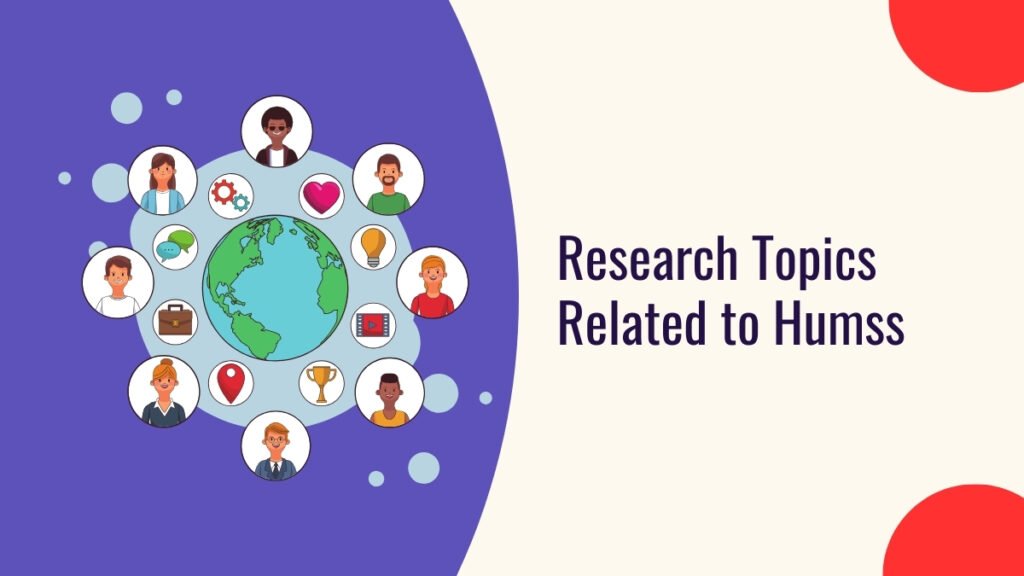Explore fascinating quantitative research topic related for HUMSS strand students. Dive into where humanities and social sciences meet data, revealing insights into human behavior and culture.
HUMSS covers historical analysis, literary interpretation, and deep cultural studies. While qualitative research is crucial here, quantitative methods offer a different, powerful way to understand.
Quantitative research uses numbers and stats to study human behavior, social trends, and the impact of arts and culture. If you’re a HUMSS student interested in blending social sciences with data precision, quantitative research is perfect for you.
In this blog, we unveil a range of engaging quantitative research ideas for HUMSS students. Discover how these methods can apply across different HUMSS subjects, get tips on choosing strong research topics, and start uncovering valuable insights. Get ready to explore the measurable side of human experiences!
Quantitative Research Topic Related to Humss Strand PDF
What is Quantitative Research?
In research, quantitative research stands out for its focus on numerical data and statistical analysis to uncover patterns and answer questions within populations.
Key Points of Quantitative Research
- Focus on Numbers: Unlike qualitative methods that explore experiences, quantitative research uses measurable data like surveys, test scores, demographics, and social media metrics.
- Statistical Analysis: It employs statistical tools to identify relationships between variables, assess findings’ significance, and draw conclusions from the data.
Advantages
- Generalizability: By analyzing data from a representative sample, quantitative research allows for broader conclusions applicable to larger populations.
- Strong Evidence: Statistical analysis provides solid evidence, assessing the likelihood of results being due to chance and strengthening research credibility.
In essence, quantitative research offers a clear, objective way to study social phenomena, human behavior, and cultural impacts using numbers and statistics.
Quantitative Research Topic Related to Humss Strand
Check out quantitative research topic related to Humss strand:-
History
- Economic Impact of World War II
- Analyze how World War II affected a country’s economy using data on production, trade, and government spending.
- Urbanization Trends
- Study how 19th-century industrialization changed city populations, focusing on migration and living conditions.
- Public Opinion on Historical Preservation
- Survey attitudes towards preserving historical landmarks and link them to tourism and cultural identity.
- Religious Influence on Politics
- Quantify how religious organizations shaped political decisions during key historical events.
- Impact of Immigration Policies
- Measure how immigration policies affect cultural integration among different immigrant groups.
- Attitudes Towards Controversial Monuments
- Survey public sentiment on preserving historical monuments and analyze differences across demographics.
- Environmental Impact of Ancient Civilizations
- Use archaeological and environmental data to study how ancient civilizations affected their environments.
- Economic Motives of Exploration
- Analyze trade records to understand why European powers explored and colonized new territories.
- Propaganda’s Role in Historical Conflicts
- Study the effectiveness of propaganda during historical conflicts using media analysis and opinion polls.
- Socio-economic Effects of the Great Depression
- Analyze how the Great Depression impacted rural communities’ employment and income.
Economics
- Income Inequality
- Study trends in income distribution to understand why income gaps widen in certain countries.
- Trade Policies and Agriculture
- Quantify how trade agreements affect agricultural exports and farmer incomes.
- Microfinance Programs
- Evaluate how microfinance loans impact poverty reduction and business growth.
- Renewable Energy Benefits
- Analyze the economic advantages of investing in renewable energy, including job creation and energy savings.
- Education Spending and Economic Growth
- Study how government investments in education correlate with economic growth.
- Consumer Behavior in Luxury Markets
- Analyze spending patterns in luxury goods markets and their demographic influences.
- Economic Impact of Brexit
- Quantify how Brexit affected trade, investment, and employment in the UK.
- Foreign Investment and Jobs
- Study how foreign investments create jobs in developing countries.
- Healthcare Reforms
- Analyze the economic impact of healthcare policy changes on providers and consumers.
- Natural Disasters and Local Economies
- Quantify the economic costs of natural disasters on local communities.
Sociology
- Social Mobility
- Track changes in social mobility across generations and their impact on educational and job outcomes.
- Social Media and Relationships
- Study how social media use affects friendships and feelings of loneliness among young adults.
- Gender in Corporate Leadership
- Quantify gender representation in executive roles in major companies.
- Urbanization and Families
- Analyze how urbanization affects family size and household structures.
- Diversity Training in Workplaces
- Evaluate how diversity training programs influence workplace inclusivity.
- Youth Voting Patterns
- Study factors influencing political participation among young voters.
- Income Inequality and Crime
- Analyze how income inequality relates to crime rates in urban areas.
- Globalization and Cultural Identities
- Study how globalization impacts cultural identities in diverse societies.
- Social Integration of Immigrants
- Assess how well immigrants integrate into communities.
- Mental Health Disorders
- Quantify the prevalence of depression and anxiety among different populations.
Political Science
- Voter Turnout and Electoral Systems
- Analyze how different electoral systems affect voter turnout and representation.
- Political Ideologies and Environment
- Study how political ideologies influence environmental policies.
- Effectiveness of International Sanctions
- Evaluate the impact of sanctions on achieving political goals.
- Government Transparency
- Measure public trust in government transparency and accountability.
- Media Framing and Politics
- Analyze how media coverage influences public opinion and political discourse.
- Lobbying and Legislation
- Quantify the influence of lobbying on legislative decisions.
- Peacekeeping Missions
- Evaluate the effectiveness of UN peacekeeping missions.
- Social Media and Political Activism
- Study the role of social media in political mobilization.
- Political Scandals and Public Trust
- Analyze the impact of political scandals on voter trust.
- Gerrymandering and Elections
- Study how gerrymandering affects electoral fairness.
Psychology
- Cyberbullying Among Teens
- Measure the prevalence and effects of cyberbullying on adolescent mental health.
- Mindfulness and Stress Reduction
- Evaluate how mindfulness practices reduce stress among college students.
- Personality Traits and Academic Success
- Study how personality traits impact academic achievement.
- Childhood Experiences and Adult Mental Health
- Analyze how childhood trauma affects adult mental health.
- Access to Mental Health Services
- Quantify disparities in mental health service access among different groups.
- Culture and Mental Health
- Study how cultural norms influence mental health perceptions.
- CBT for Anxiety
- Evaluate the effectiveness of cognitive-behavioral therapy for anxiety disorders.
- Social Media Addiction
- Study the prevalence and effects of social media addiction.
- Media Violence and Behavior
- Analyze how exposure to media violence affects behavior.
- Sleep and Cognitive Function
- Study how sleep patterns impact cognitive performance.
Geography
- Urbanization and Ecosystems
- Analyze how urban sprawl affects local ecosystems.
- Air Quality and Health
- Study the link between air pollution and respiratory diseases.
- Climate Change and Agriculture
- Quantify how climate change impacts crop yields.
- Deforestation and Biodiversity
- Evaluate the ecological effects of deforestation.
- Water Scarcity and Conflicts
- Study how water scarcity increases conflict risk.
- Migration and Communities
- Analyze how migration patterns affect communities.
- Land Use and Ecosystem Services
- Quantify changes in land use and their impact on ecosystems.
- Disaster Preparedness
- Evaluate preparedness measures for natural disasters.
- Tourism Development and Coastal Areas
- Study the environmental impact of tourism on coastal regions.
- Pollution and Marine Life
- Analyze pollution’s effects on marine ecosystems.
Anthropology
- Cultural Adaptation Among Immigrants
- Study how immigrants adapt cultural practices in new environments.
- Globalization and Traditional Crafts
- Analyze changes in traditional craft production due to globalization.
- Dietary Habits Among Indigenous Populations
- Study nutrition and dietary habits among indigenous groups.
- Cultural Diversity and Social Cohesion
- Quantify how cultural diversity impacts social cohesion.
- Indigenous Languages and Identity
- Study the role of indigenous languages in cultural identity.
- Gender Roles Across Cultures
- Analyze gender roles in different cultural contexts.
- Rituals and Community Impact
- Study the social functions of traditional rituals and ceremonies.
- Music and Cultural Significance
- Analyze the cultural importance of music and dance traditions.
- Folklore and Oral Traditions
- Study the preservation and adaptation of folklore.
- Cultural Exchange Programs
- Evaluate programs promoting intercultural understanding.
Literature
- Gender Representation in Literature
- Analyze gender representation in literature course syllabi.
- Literary Genres and Social Movements
- Study how literary genres reflect social and political movements.
- Themes in Author’s Works
- Analyze recurring themes in an author’s works.
- Literary Criticism and Writing Styles
- Study how literary criticism influences writing styles.
- Translated Literature and Reception
- Analyze how translated literature is received in different cultures.
- Digital Publishing and Reading Habits
- Study digital book sales and e-book reading habits.
- Mental Health in Literature
- Analyze how mental health issues are portrayed in literature.
- Feminist Themes in Literature
- Study the evolution of feminist themes in literature.
- Censorship and Literary Creativity
- Analyze the impact of censorship on literary expression.
- Literary Adaptations and Public Perception
- Study audience responses to literary adaptations.
Why Choose Quantitative Research in HUMSS?
In HUMSS (Humanities and Social Sciences), where history, literature, and culture are deeply analyzed through qualitative research, quantitative research offers another valuable approach.
- Revealing Trends: Quantitative research uncovers broad patterns within populations by analyzing numerical data. For example, it can reveal connections between media consumption and political views or how socioeconomic factors affect education outcomes.
- Measuring Tangibles: It allows measurement of quantifiable aspects of human behavior and social phenomena, such as survey data on social media use or crime statistics across cities.
- Adding Objectivity: Quantitative methods use statistical analysis and numerical data to reduce bias, enhancing the credibility of findings compared to qualitative approaches.
- Broad Insights: By studying representative samples, quantitative research draws conclusions that apply to larger populations, providing insights into wider social trends.
Example: For instance, studying the impact of social media on mental health could use quantitative analysis to identify if increased use correlates with higher rates of anxiety or depression across different age groups.
In summary, quantitative research in HUMSS offers a clear, objective way to explore human experiences and social complexities. Embrace this approach to uncover meaningful insights with numerical precision.
Finding Your Focus
Check out the best way to find your focus:-
Psychology
- The Digital Detox Dilemma
- Question: Does limiting social media improve well-being and academic performance?
- Method: Analyze survey data on social media use, grades, and well-being scores.
- Music and Mood
- Question: Does music genre affect emotional state?
- Method: Survey music habits and correlate with mood trackers.
- Learning Styles
- Question: Do different learning styles impact academic success?
- Method: Compare survey data on learning styles with test scores.
Sociology
- Generation Gap
- Question: How do social media use and political attitudes vary by age?
- Method: Analyze social media activity and survey responses on political beliefs.
- Urbanization and Crime
- Question: Does urbanization influence crime rates?
- Method: Compare crime stats with population density and socioeconomic data.
- Education Divide
- Question: Does socioeconomic background affect educational attainment?
- Method: Analyze census data and educational stats by income levels.
Communication
- Language and Perception
- Question: Does language influence perception and attitude?
- Method: Conduct surveys with participants from different language backgrounds.
- Conflict Resolution
- Question: Do communication styles impact conflict resolution success?
- Method: Observe communication patterns in conflicts and correlate with outcomes.
- Advertising and Brand Awareness
- Question: Does advertising strategy influence brand awareness?
- Method: Survey brand awareness and analyze ad campaign metrics.
Interdisciplinary Ideas
- History and Literature: Analyze word trends in historical documents or study the correlation between book genres and reader demographics.
Tips for Choosing a Strong Quantitative Research Topic in HUMSS
Choosing a strong quantitative research topic in HUMSS (Humanities and Social Sciences) requires careful consideration. Here are some tips to help you pick a winning topic:
Focus on Measurable Concepts
- Quantify Complex Ideas: HUMSS often deals with complex and qualitative concepts. Choose topics that can be translated into numerical data.
- Measure Variables: Look for topics where you can measure variables and analyze relationships between them.
Consider Your Interests and Resources
- Stay Motivated: Pick a topic that genuinely interests you to maintain motivation throughout the research process.
- Access to Data: Think about your access to data. Can you survey people? Is there existing data available online or through government sources?
- Practical Constraints: Consider your timeframe and available resources. Some topics might require more time or specialized software for data analysis.
Look for Current Issues with a Quantitative Angle
- Current Relevance: Think about current social, political, or cultural issues.
- Quantitative Insights: Find ways to use quantitative data to shed light on these issues. For example, instead of researching the history of poverty, analyze income inequality statistics across different demographics.
Example Breakdown
- Broad Topic: The Impact of Social Media on Teenagers
- Quantitative Angle: The Correlation Between Time Spent on Social Media and Depression Rates in Teenagers
Additional Tips
- Start Broad, Then Narrow: Begin by brainstorming broad topics within HUMSS that interest you. Then, identify a specific research question that can be addressed quantitatively.
- Check Existing Research: Review existing research on your chosen topic. This helps refine your question and avoid redundancy.
- Consult Professors: Discuss your research ideas with your professors. They can offer valuable guidance and suggest resources for data collection and analysis.
By following these tips, you can choose a strong quantitative research topic in HUMSS that is both interesting and feasible.
Conclusion
In conclusion, quantitative research in HUMSS (Humanities and Social Sciences) offers a unique way to explore human experiences and societal issues. By turning complex ideas into measurable data, researchers can find patterns and trends that reveal important insights.
Whether you’re looking at how social media affects mental health or how economic factors influence education, quantitative research can provide valuable information for policy, social programs, and understanding our world.
The best topics are those that interest you and can be measured. So, get curious, explore the possibilities, and let the numbers tell their story in the world of HUMSS.



